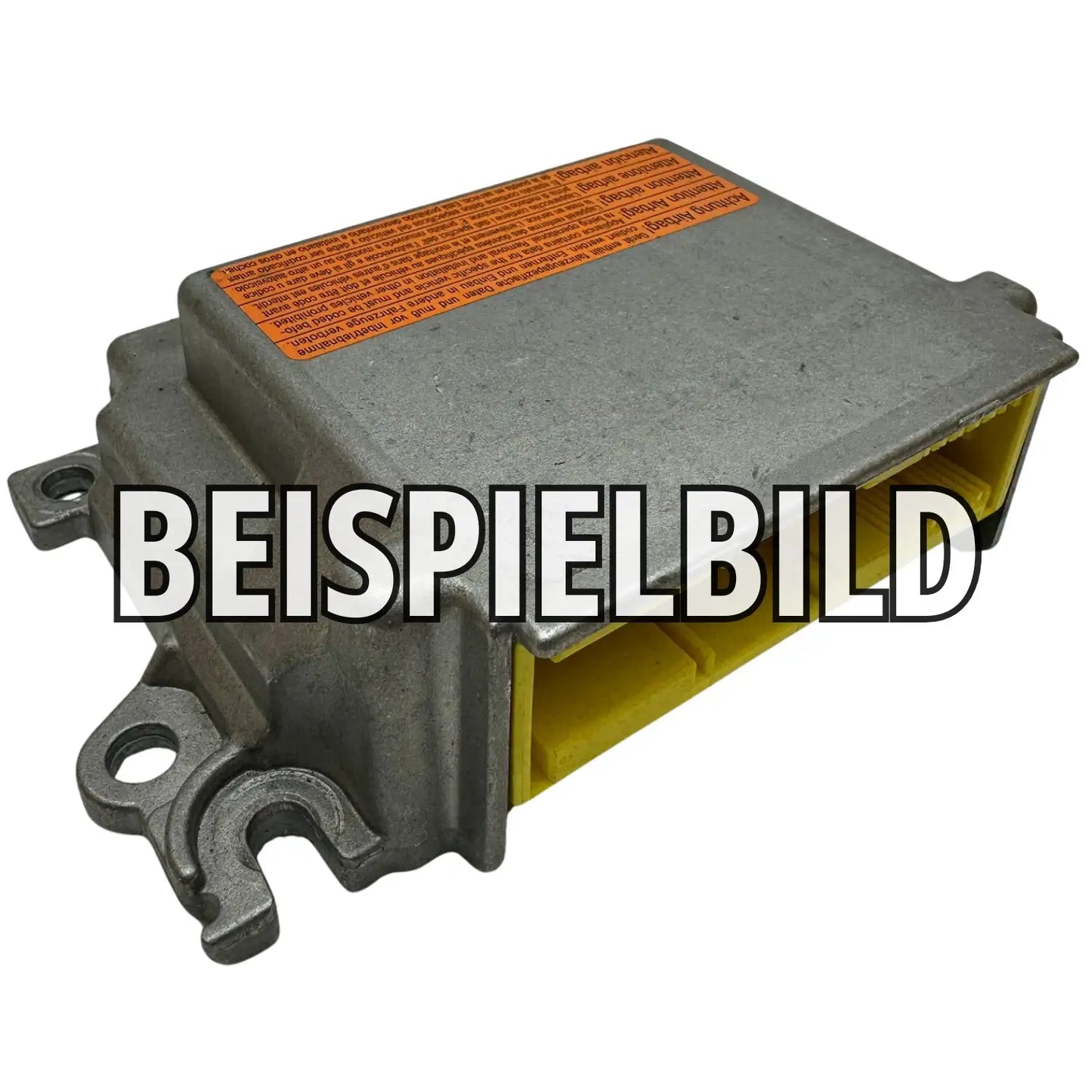Saab 9-2X Linear Airbag Control Unit Repair
So funktioniert die Reparatur Ihres Airbag-Steuergerätes bei uns

What is a Saab 9-2X Linear Airbag Control Unit?
The Saab 9-2X Linear Airbag Control Unit is the central safety unit in the vehicle, responsible for monitoring and precisely deploying all occupant restraint systems, including airbags and seatbelt pretensioners, in the event of an accident. It processes sensor data and stores important crash information, ensuring maximum occupant protection.
This electronic module integrates signals from front and side impact sensors to react quickly and correctly in the event of a collision. It is directly connected to the Saab 9-2X's CAN bus system, ensuring seamless communication with other vehicle components.
With a 12 V power supply from the vehicle's electrical system, it provides a secure power supply for reliable airbag deployment. Its diagnostic capabilities allow for reading and erasing error codes, which is essential for any Saab 9-2X linear airbag control unit repair.
Why is the Saab 9-2X Linear Airbag Control Unit defective?
The Saab 9-2X Linear Airbag Control Unit often fails due to moisture or age-related material fatigue, which can cause internal electronic damage such as ground faults or short circuits. This can lead to communication errors within the system and impair the functionality of the safety equipment, necessitating repair.
Moisture is a primary cause of failures, as it can cause corrosion and short circuits on the control unit's sensitive circuit boards and connectors. Such damage often manifests as a ground fault or the failure of specific components.
Internal communication errors, such as those indicated by error code B1000, are also common. These can be caused by faulty solder joints, damaged microcontrollers, or software issues and require specialized diagnostics for Saab 9-2X Linear Airbag Control Unit repair.
External influences such as strong vibrations or improper disassembly can also cause damage to the sensitive components. A failure often renders the vehicle undrivable because the SRS system no longer functions properly.
Common error codes for Saab 9-2X Linear Airbag Control Unit repair
When it comes to Saab 9-2X Linear airbag control unit repair, error code B1000 is the most common, indicating internal communication errors within the control unit. Specific error codes directly associated with the 9-2X Linear are rarely documented, making a VIN-based diagnosis essential.
- B1000 : Internal control unit communication error → Signal disturbance or defect of the airbag ECU → May be caused by moisture, aging or an internal component failure.
Other generic error codes related to airbag systems often relate to sensors, seatbelt pretensioners, or airbag modules themselves, but are not directly associated with the 9-2X Linear's control unit. Therefore, a professional readout using vehicle-specific tools is essential for a precise diagnosis during Saab 9-2X Linear airbag control unit repair.
The lack of specific error codes for the 9-2X Linear Airbag Control Unit underscores the need for precise fault analysis by qualified workshops. This helps to effectively resolve any failure.
What part numbers are available for the Saab 9-2X Linear Airbag Control Unit repair?
For Saab 9-2X linear airbag control unit repairs, there are currently no 100% verified OEM part numbers available that meet professional search criteria. An exact match requires a VIN-based search in specialized databases or a direct inquiry to Saab service partners.
Finding specific OEM part numbers for the Saab 9-2X Linear airbag control unit is difficult because they aren't listed in common, publicly accessible catalogs. This is often the case with highly sensitive safety parts.
Many airbag control units are manufactured by suppliers such as Autoliv, Bosch, or Siemens. Without the exact OEM part number or vehicle identification number (VIN), it is impossible to precisely identify the correct control unit for the Saab 9-2X Linear Airbag Control Unit repair.
If your Saab 9-2X linear airbag control unit is defective, the most efficient method for part identification is a professional VIN query. This ensures that the correct replacement part is ordered or the repair is performed correctly.
- Choosing a selection results in a full page refresh.
- Opens in a new window.


